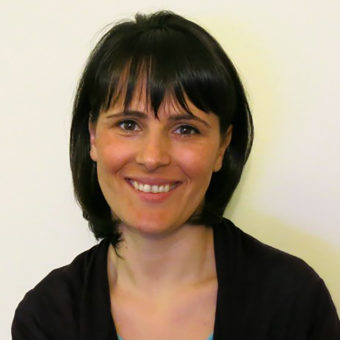Dr. Balaj is Assistant Professor of Neurosurgery and Co-Director of the Center for Liquid Biopsy at the Brain Tumor Research Center at Massachusetts General Hospital where she develops blood-based assays for the diagnosis and monitoring of gliomas. Her novel research approach holds great promise for the treatment of cancers by revealing the precise behavior of tumor cells in an individual patient’s blood and accurately measuring the impact of potential therapies.
Dr. Balaj’s work focuses on extracellular vesicles (EVs), circulating biomarkers and liquid biopsy. Extracellular vesicles are lipid vesicles that carry biological cargo intercellularly over short or long distances. The cargo within EVs is a snapshot representation of the status of the releasing cells and can be used to indirectly study altered cells. Once these EVs enter the bloodstream, they can be isolated and analyzed to better understand the status of the releasing cell. Specific assays targeting cancer-relevant gene alterations can be developed based on the information found withing EVs or free floating in circulation.
Recent work published by Dr. Balaj’s team includes a PCR assay for two common point mutations occurring in the Telomerase Reverse Transcriptase (TERT) promoter region. These mutations are found in over 80% of high-grade gliomas and are mutually exclusive. The assay was tested in over 160 patient samples and was demonstrated to be an effective marker of tumor diagnosis and therapy monitor.
In another highly novel work, Dr. Balaj took advantage of a fluorescent marker currently being used in gliomas to enhance tumor resection. Upon the patient’s ingestion of 5-aminolevulinic acid, tumor cells turn pink (under blue light) while normal tissues does not. Dr. Balaj showed that glowing cells indeed release glowing EVs and these can be detected in plasma, quantified and correlated with tumor size. In follow-up work, Dr. Balaj developed methods to sort plasma-derived glowing EVs, extract RNA and perform whole transcriptome sequencing. This is the first-time tumor specific EVs have been analyzed from a biofluid and this work opens doors for personalized peripheral, blood-based cancer monitoring.
More recently Dr. Balaj has expanded her sequencing breadth to include direct RNA-sequencing technologies that allow unraveling of the epitranscriptome. RNA is a well-studied central player in RNA biology, but we still lack basic understanding of the range of modifications that influence its role in cells and specifically EVs. Using direct RNA sequencing, Dr. Balaj will advance the field of RNA biology by decoding the range of RNA modifications, their roles and exactly how these species are packaged into EVs.
Dr. Balaj holds a master’s degree in Oncology and a PhD in Medicine from the Vrije Universiteit Amsterdam in the Netherlands
